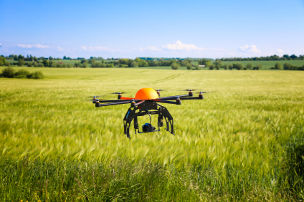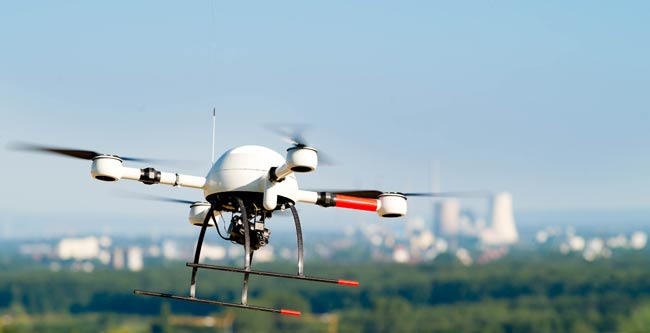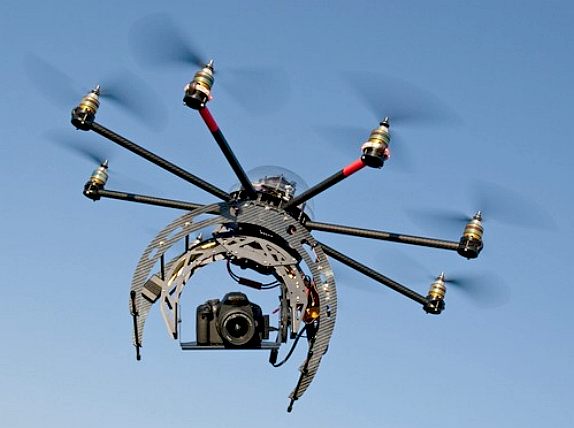June 2015 – Frequently Asked Questions about Remotely Piloted Aviation Systems (RPAS). What is a civil drone?
Frequently Asked Questions about Remotely Piloted Aviation Systems (RPAS)
What is a civil drone?
The term drone is used to describe any type of aircraft that is automated and operates without a pilot on board. There are two types of drones.
- Remotely Piloted Aviation Systems (RPAS), in short a drone that is controlled by a human pilot from a distant location. This means that there is always a pilot in charge – even if remotely. These are the only types of drones that can be authorised currently, and under the new framework, for use in EU airspace.
- Unmanned drones. These are drones, which are automatically programmed – without being piloted, even remotely. These are not yet authorised for use, either by ICAO or under EU rules.
The term “civil” drones is used to cover those RPAS that are used for civil purposes such as delivering mail or inspecting an oil platform out at sea. Over time, civil drones have a great potential to execute numerous tasks, including jobs, which are dirty, dull or dangerous for people.
 What are civil drones used for?
What are civil drones used for?
Civil drones are already being used to take over repetitive or sometimes dangerous tasks, which can be more effectively or safely be performed by a machine.
In Europe, drones are being used for safety inspections of infrastructure, such as rail tracks, dams, dykes or power grids. National authorities are making more use of drones in disaster relief actions, e.g. to assess the situation in flooded areas or to support the fighting of forest or building fires. Elsewhere, drones operators support precision farming through more effective and timely application of fertilisers or insecticide.
In the future drones could make it possible to develop more efficient wind turbines and produce more “green” electricity, or to complete coverage of telecommunications in a cost-effective way. At the opposite side of the scale, engineers are working on micro drones which could be used to tackle gas or chemical leaks, or which could be programmed to act like bees to pollinate plants.
The sector is evolving very fast with industries signalling their interest in adapting drones to execute specific services for which there is a market.
What is the size of the drones market and who are the major players?
The technology for drones is maturing and the market for civil drones is evolving fast. Some estimate that in the next 10 years civil drones could be worth 10% of the aviation market, representing about EUR 15 billion per year.
There are already more than 1,700 different types of drones produced by official manufacturers, with about one third in Europe.
Following some industry estimates, Drones manufacturing may create up to 150,000 European jobs by 2050.
Currently, the US and Israel dominate the global RPAS manufacturing sector, particularly in the field of military RPAS. Other non-European Union countries, such as Brazil, China, India and Russia, also show potential to become strong competitors.
Europe is also very active. Some 500 manufacturers are producing drones worldwide, of which about a third are in Europe. More than 1,000 operators have been granted an operating licence in Europe. In France for example, the number of approved operators increased from 86 in December 2012 to 431 in February 2014. Sweden and the UK also issued more than 200 operators’ licences each in recent years.
What are the current rules covering the use of civil drones?
The rules covering drones are currently set at UN level by the International Civil Aviation Organisation (ICAO), the UN body dealing with civil aviation. ICAO allows drones operations (RPAS) provided a national authority gives a specific authorisation, i.e. authorising the use of drones in a non-segregated airspace (this means in the same airspace also used by ‘manned’ air traffic). Such authorisations are typically restricted to specific operations under specific conditions in order to avoid safety hazards.
Some EU member states, such as Sweden, France, Denmark, Italy, Germany, Czech Republic, Lithuania and the UK have adopted legislation for simple operations by light RPAS, to avoid this case-by-case authorisation process. However, national authorisations do not benefit from mutual recognition and do not allow for European wide activities, either to produce or to operate drones. The authorisation procedures also do not provide a coherent framework, with the necessary legal safeguards in relation to concerns about safety, security, privacy, liability to be built in.
What is the problem?
Drones are already beginning to appear in our skies but there are no clear general rules, at national or at European level, which put in place the necessary safeguards protect the safety, security and privacy of people.
 In addition, operational and technical rules also need to be further developed in order to ensure that civil drones can fly like ‘normal’ air traffic and be integrated among ‘normally piloted’ aircraft in non-segregated airspace without affecting the safety and the operation of the whole aviation system.
In addition, operational and technical rules also need to be further developed in order to ensure that civil drones can fly like ‘normal’ air traffic and be integrated among ‘normally piloted’ aircraft in non-segregated airspace without affecting the safety and the operation of the whole aviation system.
It is clear that mastering civil drones (RPAS) technology is key to the future competitiveness of the European aeronautics industry – on some estimates in the next 10 years it could be worth 10% of the aviation market.
The impact of drones and their many applications on the economy could potentially be compared to the development of the internet in the 90s. It means that the safe development of the European market for drones is crucial step towards building the aviation market of the future.
For all these reasons the European Council asked the Commission in December 2013 to develop a framework for the safe integration of RPAS into civil airspace as from 2016.
The Communication on opening the market for RPAS is an invitation to all stakeholders to build together a policy framework for the development of a competitive drones market as well as rules that will tackle all citizens’ concerns.
This policy framework will concern civil rules and commercial operations, in line with EU competence. It does not address military applications.
The proposal will cover the following aspects:
1) Strict EU wide rules on Safety
Safety is the paramount objective of EU aviation policy. The integration of RPAS will be based on the principle that all operations will have an equivalent level of safety in comparison to regular, manned, aviation.
The regulatory framework would first focus on areas where technologies are mature and where there is sufficient confidence on the basis of concrete lessons learnt. Building on growing expertise and the development of the enabling technologies, regulatory measures will be introduced step by step and more complex RPAS operations will be progressively permitted.
The European Aviation Safety Agency (EASA) is best placed to develop such common rules, which must be compatible with ICAO standards.
2) Protect citizens’ fundamental rights
Drone operations must respect the Charter of Fundamental Rights of the EU, including the respect for the right to private and family life, and the protection of personal data. Flexibility, discretion, low costs and ever more sophisticated sensors are some of the characteristics that make RPAS unique tools for effective and discrete surveillance and monitoring missions. But the increased use of RPAS together with the capacity to store ever increasing amounts of data on the ground may raise ethical, privacy and data protection concerns.
The Commission will assess how to ensure that RPAS applications comply with the applicable data protection rules. Privacy needs continuous monitoring by the competent authorities including the national data protection supervisory authorities.
 3) Tough controls to ensure Security
3) Tough controls to ensure Security
RPAS are not immune to potential unlawful actions and might potentially be used as weapons. Terrorists, criminals or rogue states could use their own RPAS, could jam the navigation or communication system signals of other RPAS or hijack ground control stations.
Security aspects are vital when developing the necessary information streams to manage 4D trajectories in the future air traffic management system. As this information needs to be shared in real time by all aviation stakeholders to optimise the performance of the system, the security dimension becomes all the more important. Security aspects therefore are essential elements of the future air traffic management system, of which RPAS will become an integral part.
The identified security requirements will then need to be translated into legal obligations for all relevant players, like the air navigation service provider, RPAS operator or telecom service provider, under the oversight of the competent authorities at the national or European levels.
4) Guarantee third party liability and insurance
The current third-party insurance regime has been established mostly in terms of manned aircraft. The Commission will assess the need to amend the current rules for RPAS specificities and the way to promote the development of an efficient insurance market where fees correspond to the real financial risk estimated on the basis of acquired evidence through incidents and accident reporting.
5) Support market development and European industries
The Commission will support the emergence of a RPAS market and the competitiveness of the related industrial sectors making use of EU instruments such as the Horizon 2020 and COSME programmes. It will promote the development of RPAS applications and the related technologies, stimulate user-driven innovation, and foster the creation of cross-sectorial industrial value chains, appropriate support infrastructures and clusters.
The Commission will also identify policy opportunities to promote the utilisation of this innovative technology. For instance, RPAS may play a role in Copernicus, the EU’s Earth Observation Programme, where they could effectively complement space-borne and on-site sensors for some monitoring and surveillance services.
For further information and comment, please contact Arthur Flieger (flieger@fliegerlaw.com, +32 3 238 77 66)
© 2015 A. Flieger – This publication is defined to provide accurate and authoritative information in regard to the subject matter covered. It is transmitted with the understanding that the publisher is not engaged in rendering legal, or any other professional services. If legal advice or other expert assistance is required, professional services should be sought. You can always contact A. Flieger at flieger@fliegerlaw.com.







